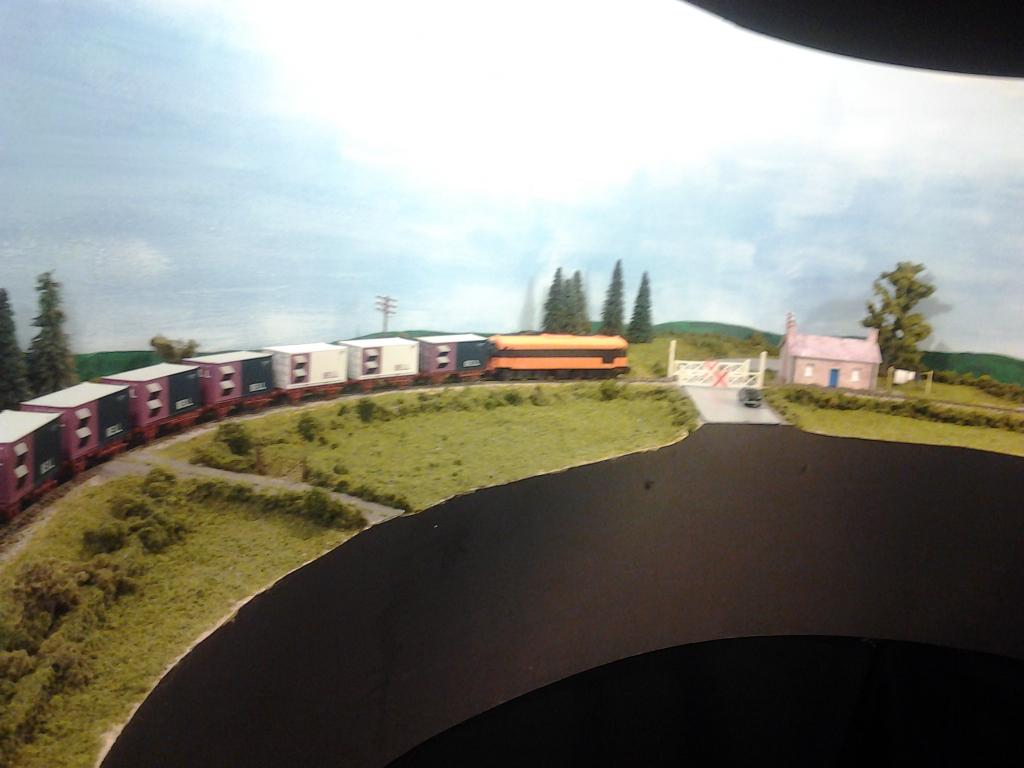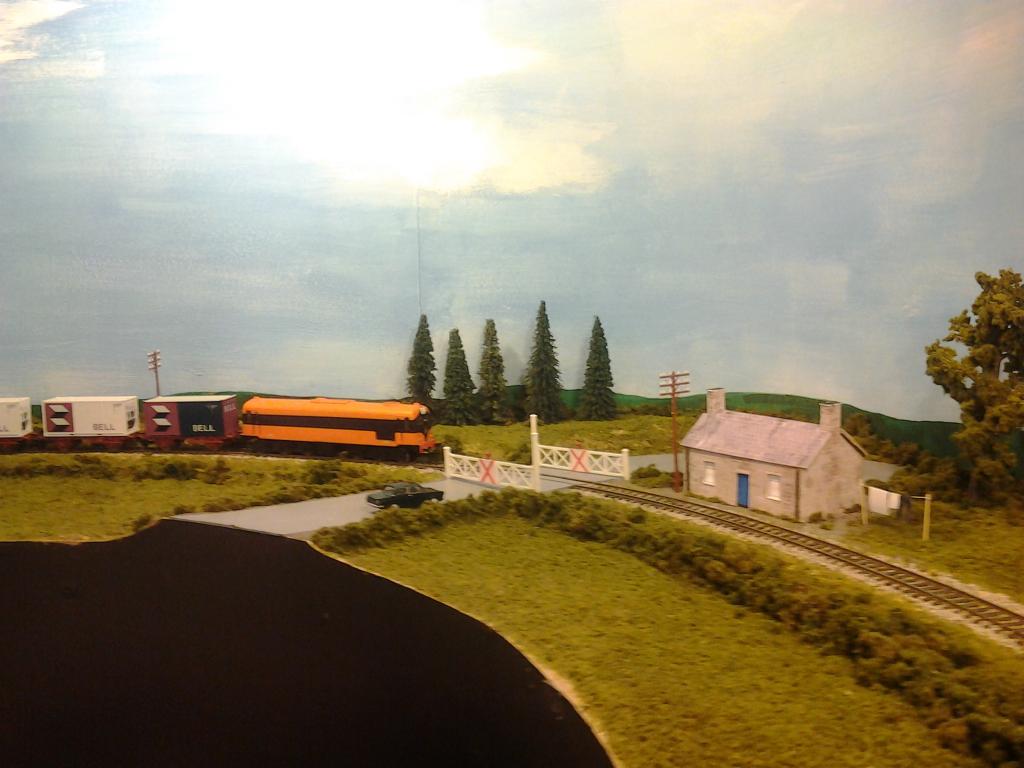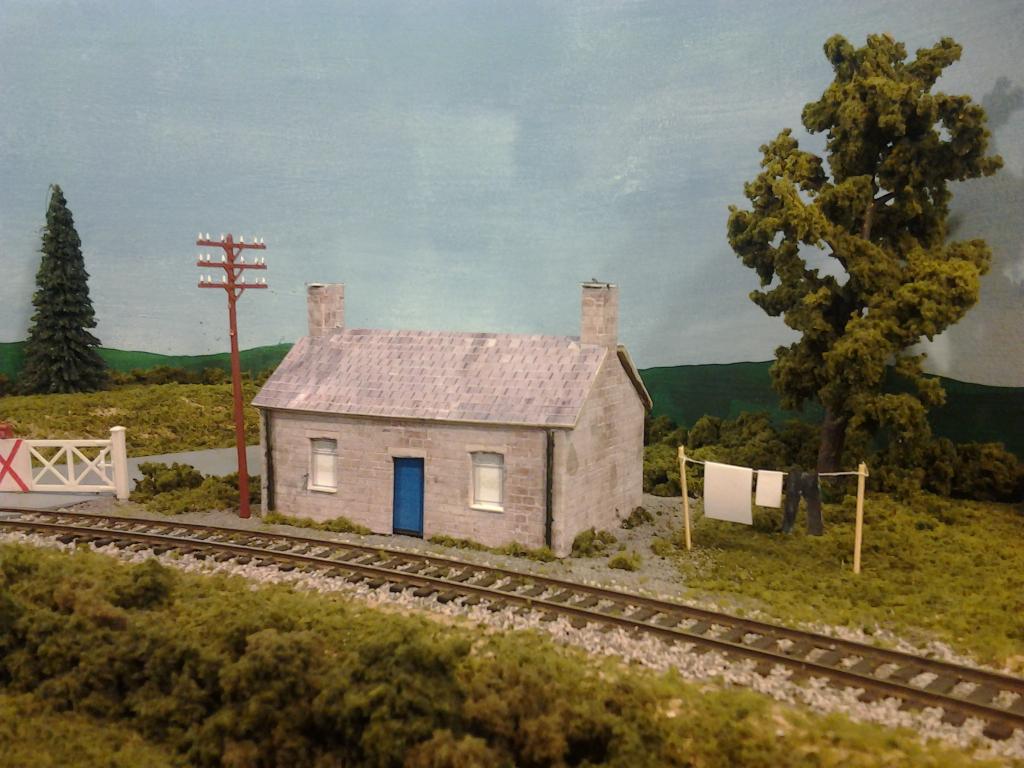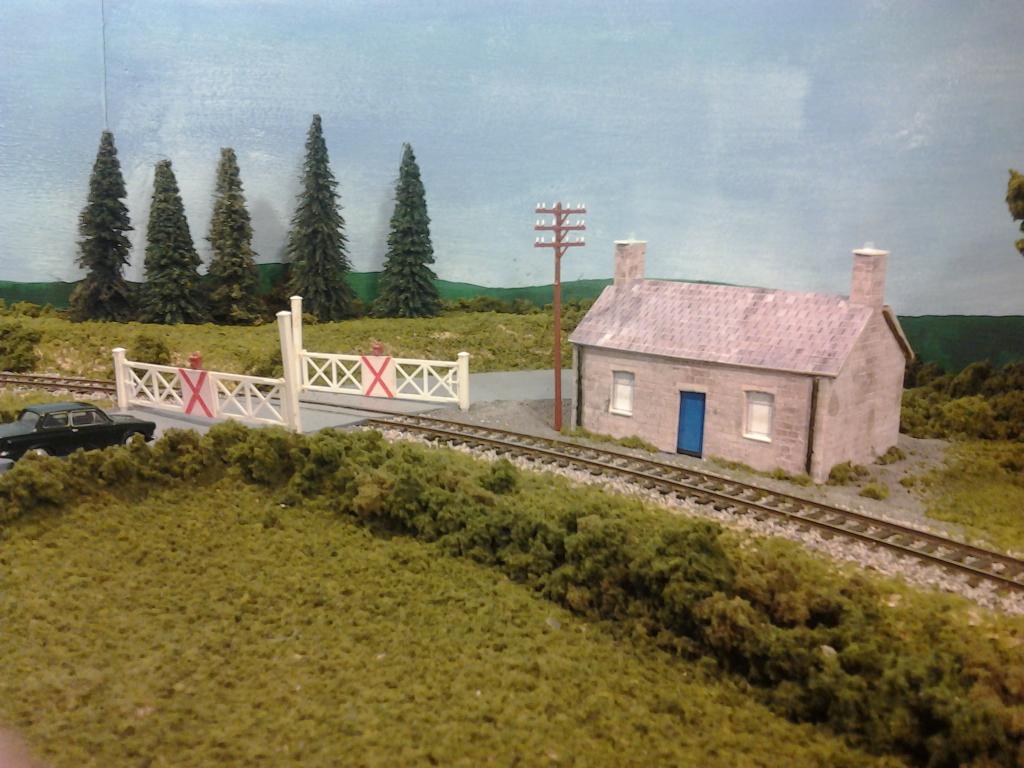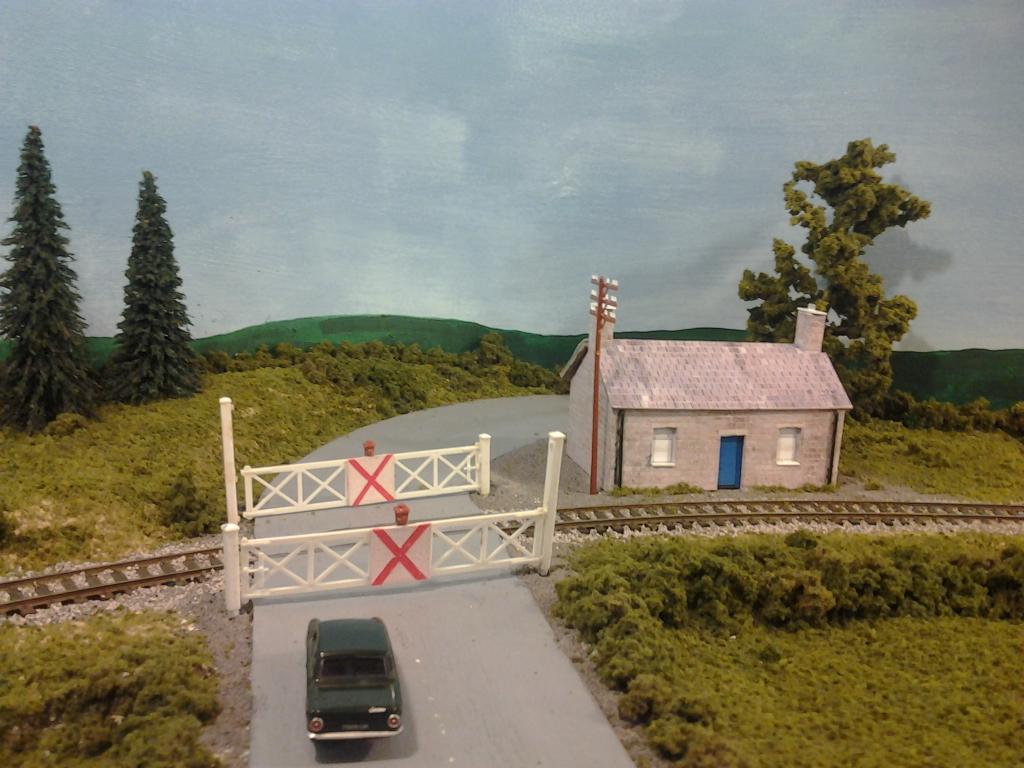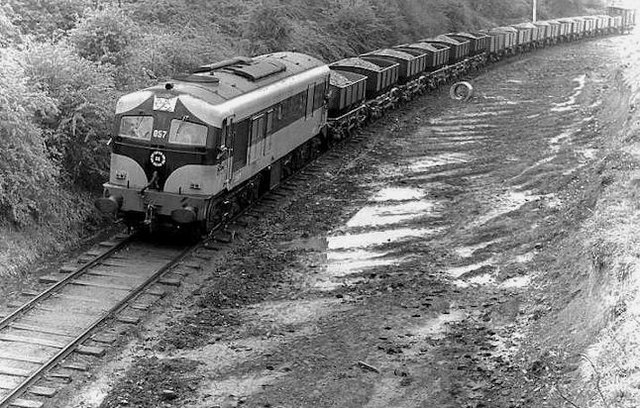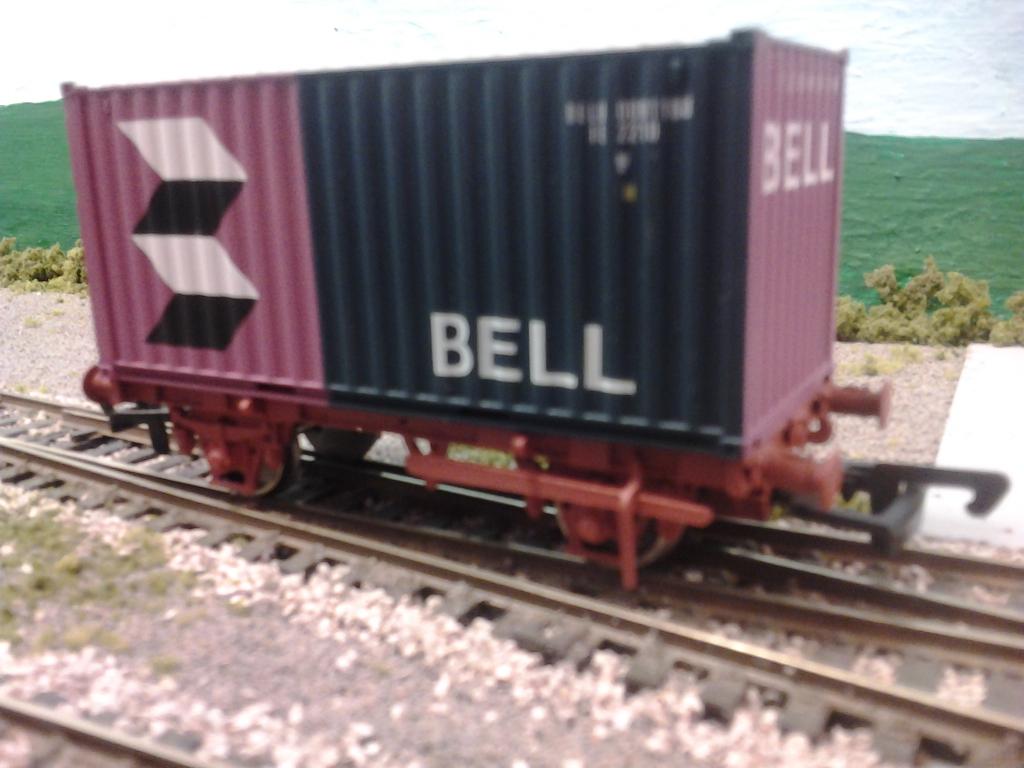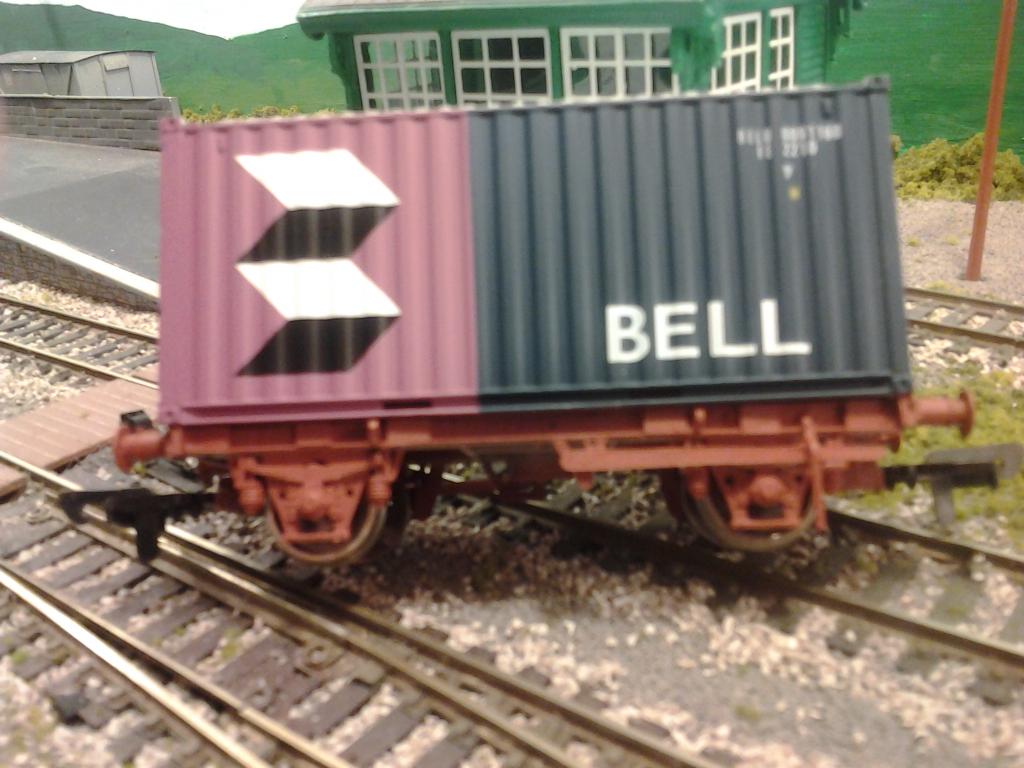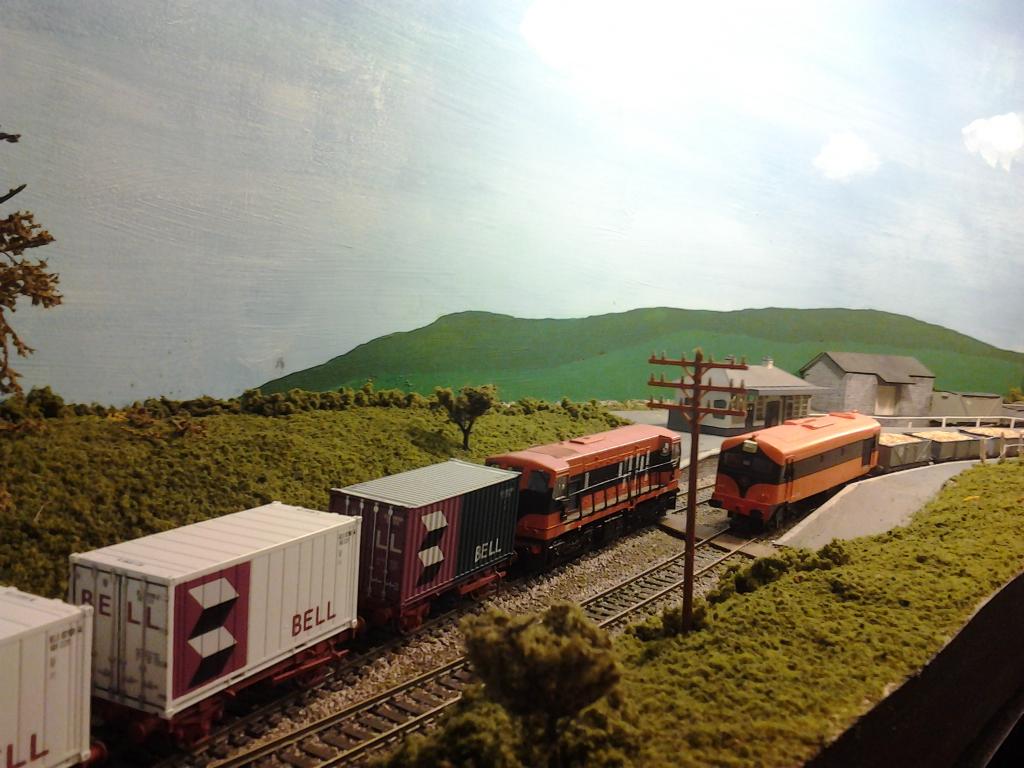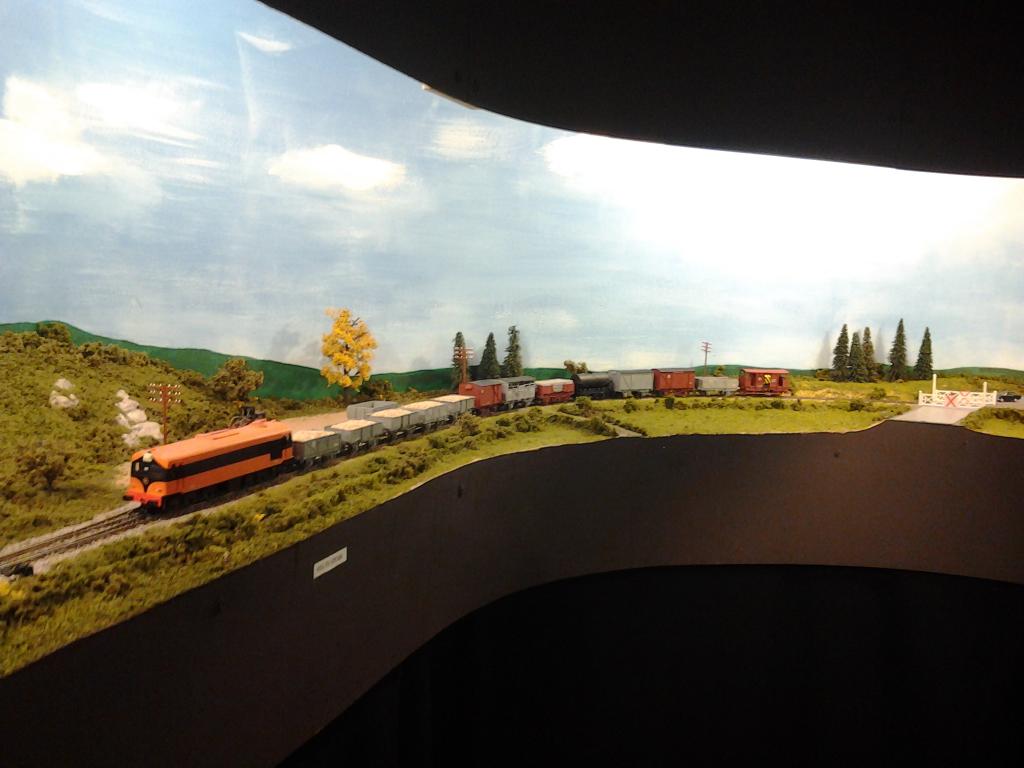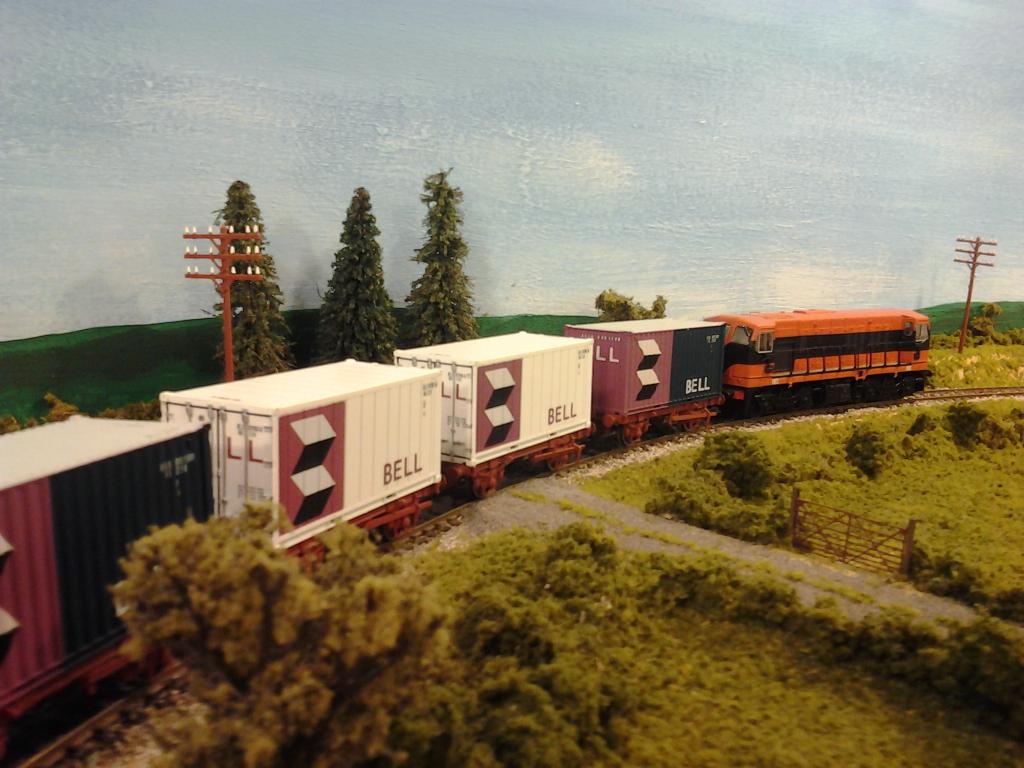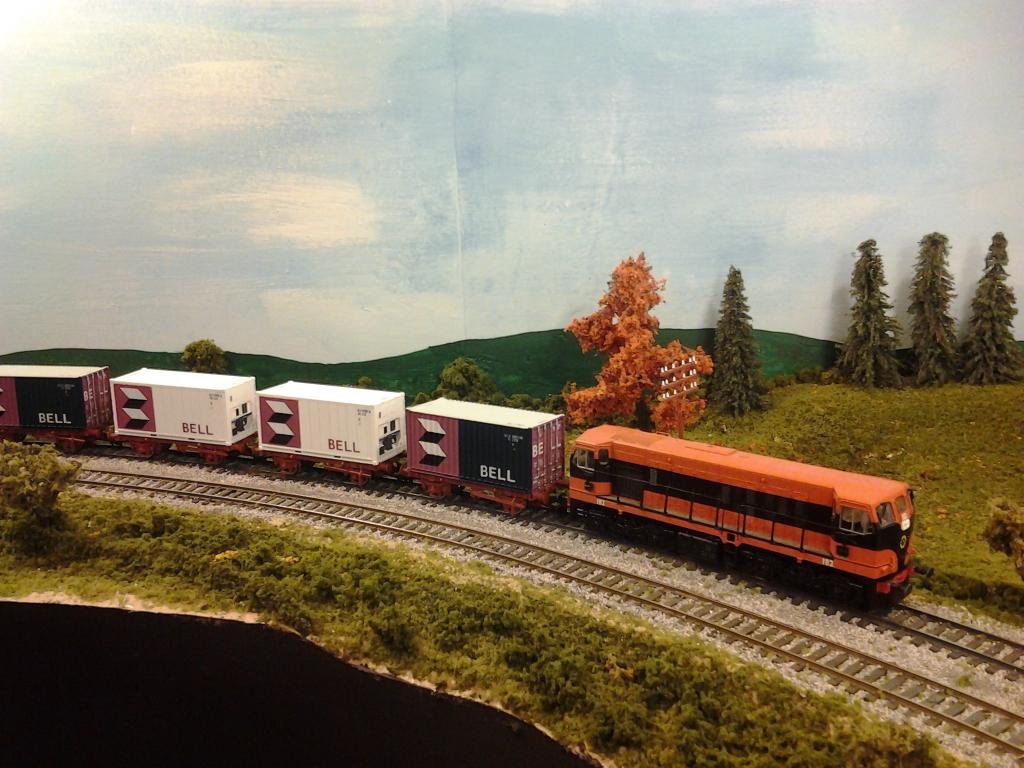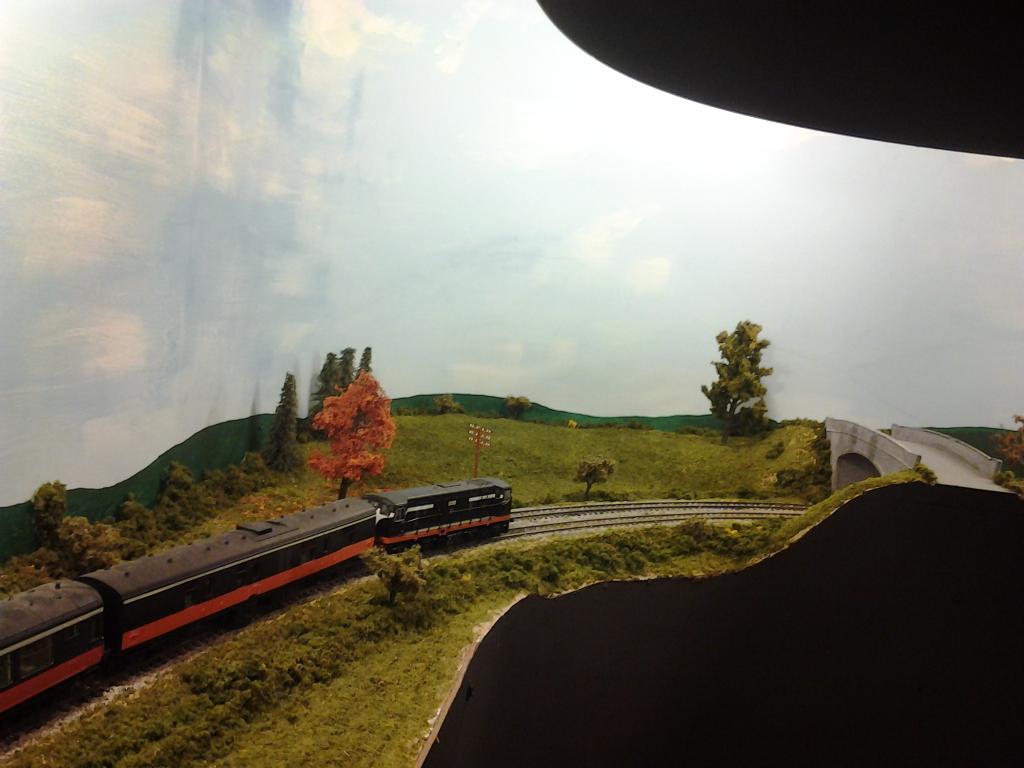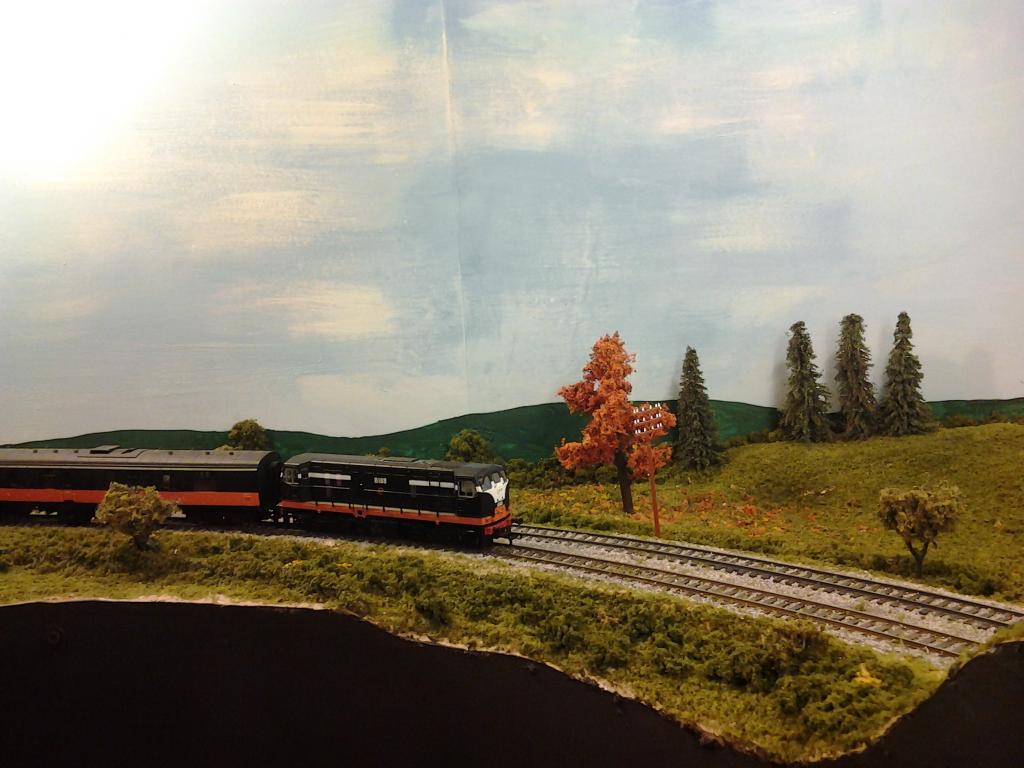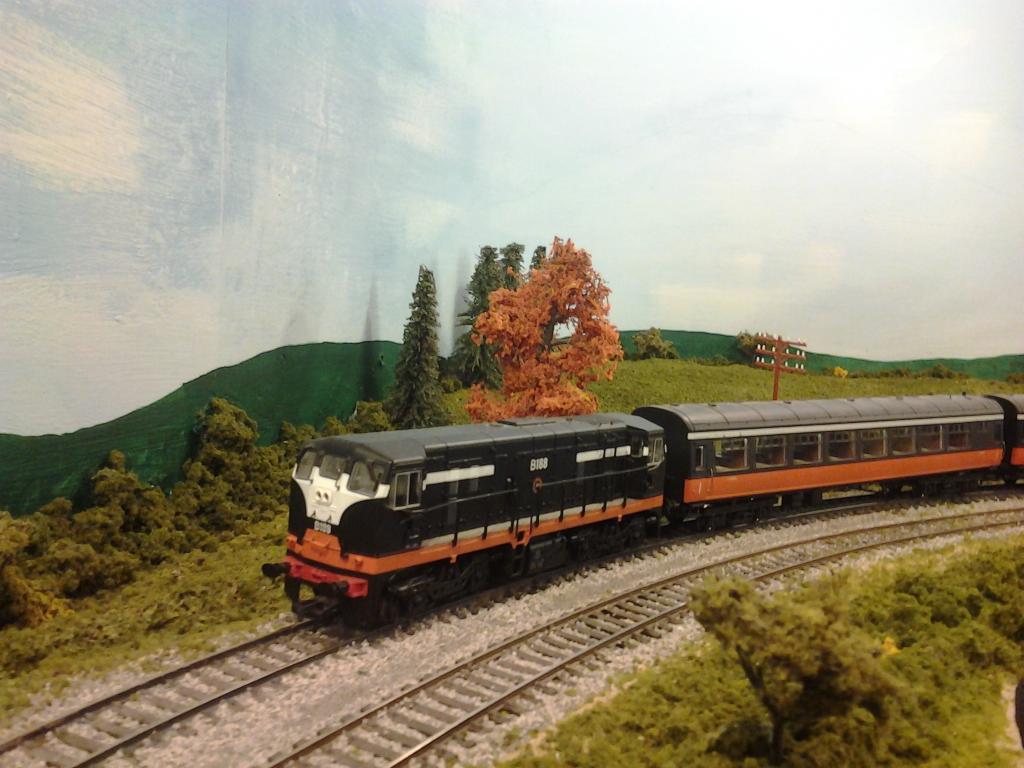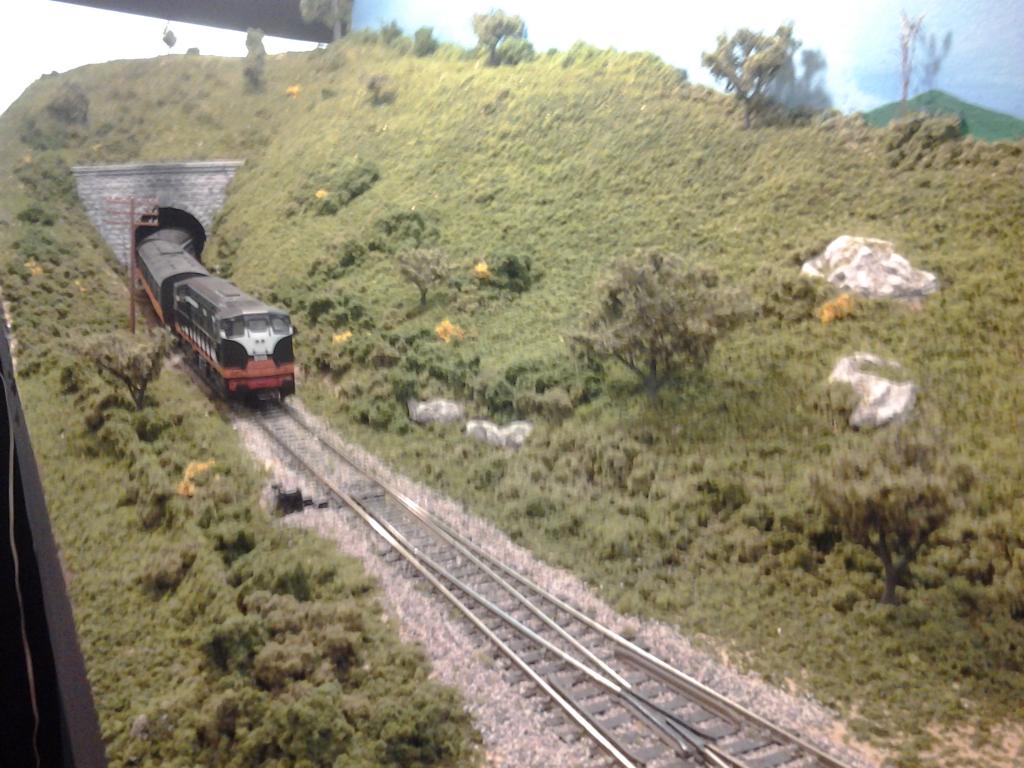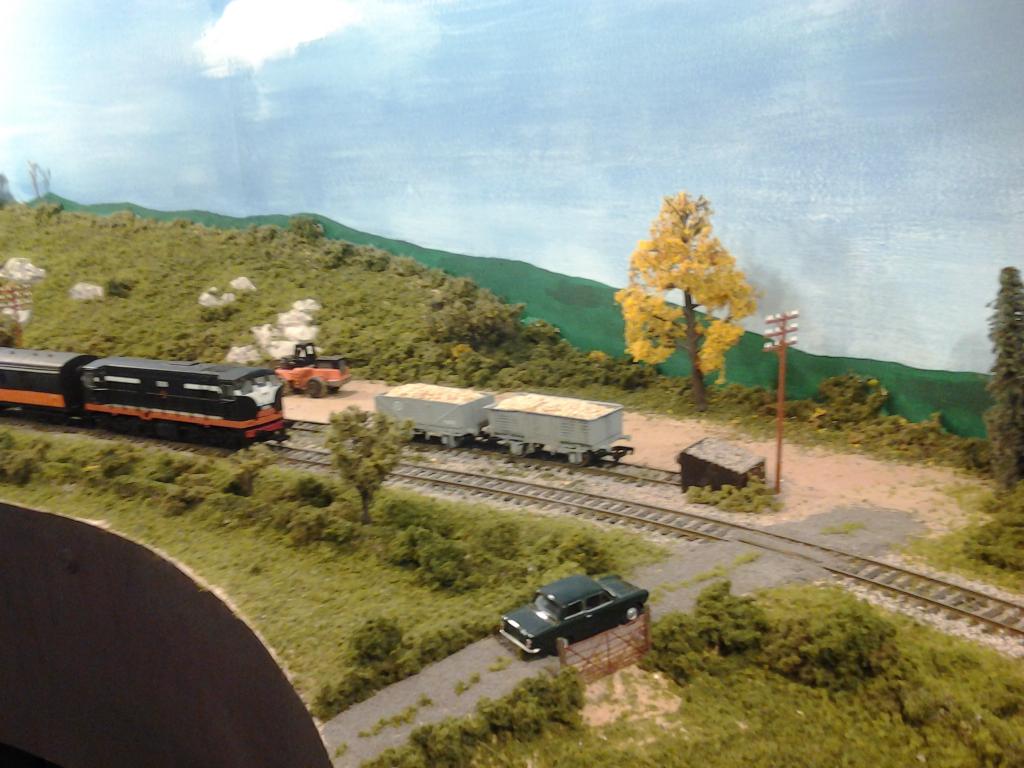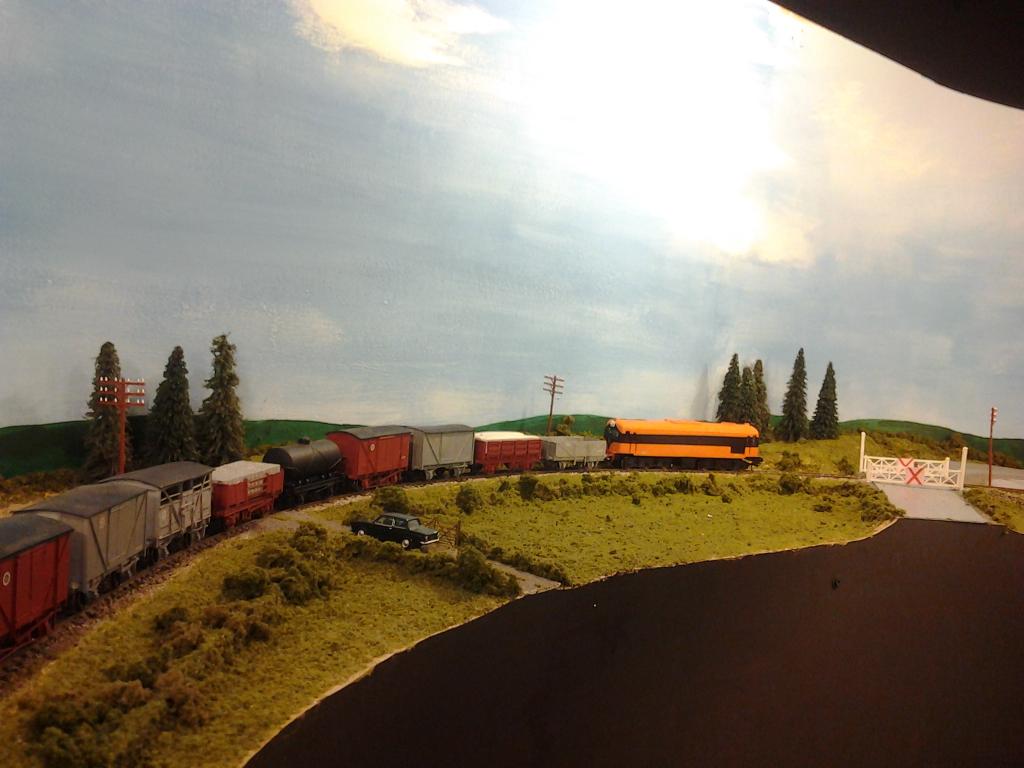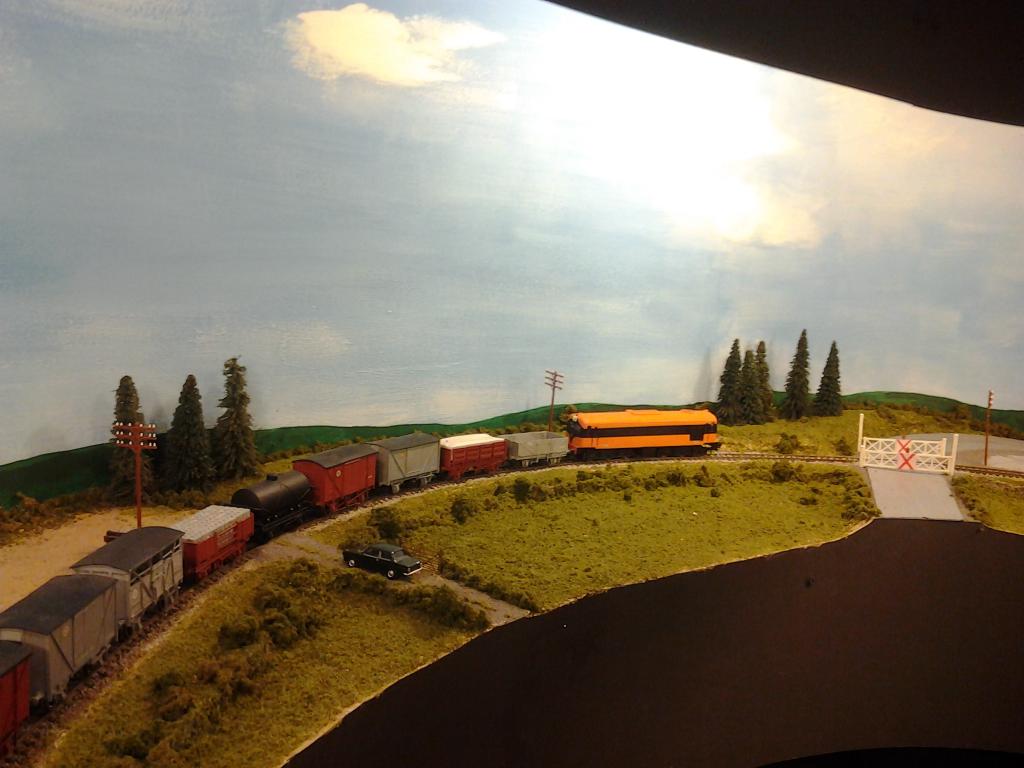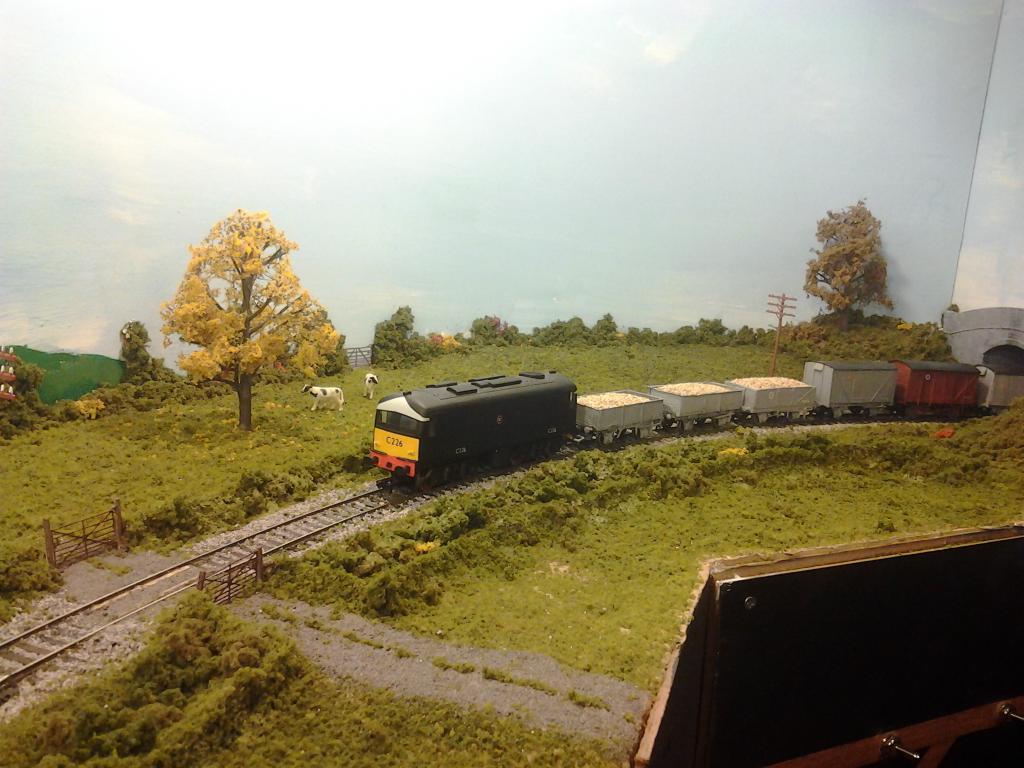-
Posts
904 -
Joined
-
Last visited
-
Days Won
41
Content Type
Profiles
Forums
Events
Gallery
Blogs
Store
Community Map
Everything posted by patrick
-
I remember seeing vans still in service in Tralee with the C painted on, rather like the B on opens for beet service.
-
[quote I was also wondering about the "C" on this van The C appeared in the very last days of the loose coupled goods era and was I believe painted on wagons intended for bagged cement traffic.
-
.thumb.jpg.3c2fadb488e8bf5ef9653331666e86a6.jpg)
Grain wagons, Tralee (Rock Street), summer 1978
patrick replied to jhb171achill's topic in General Chat
Its possible the wagons were loaded on the rails at Rock Street as the maltings/grain silos were served by a private siding. Both Latchfords and Kellihers had private sidings off of the North Kerry yard which were in use into the seventies. I remember seeing covered vans in both but I recall seeing the grain containers unloaded by the gantry crane and going by lorry for loading. The photo shows them on the loading bank siding where the gantry was located. -
Great videos. I am curious about the industrial complex shown on the right hand side of the screen on the January 2006 video. Can anyone shed some light on what it was and its history
-
The SD70's in the executive scheme were occasionally seen here in North East Ohio on trains of low sulfur coal from Wyoming. I once got a ride on a pair after the crew dropped off their train of 110 loaded coal cars at a nearby power plant. The engineer allowed me at the controls on the mainline for a few miles, something he most certainly would not have done had we had a train behind us. It was the first wide cab locomotive I was on board and I remember thinking the cab was the size of a small living room.
-
.thumb.jpg.3c2fadb488e8bf5ef9653331666e86a6.jpg)
Prototype operation of models & layout design
patrick replied to David Holman's topic in General Chat
A few weeks ago while running the pick up goods train on my South Waterford line it occurred to me that this was the reason I built the railway. Sure the passenger trains are nice, as is the Bell ferry train. The manganese and oil train will be great when it gets built as will the dolomite train which will use the promised Irish Railway Models ballast hoppers. (There are deposits of dolomite near Lombardstown on the Tralee line and shipping it to Ballinacourty was considered at one time. Had a line been built between Youghal and Dungarvan as I imagine the South Waterford line to be, this would have been a plausible route). All of these trains merely punctuate the passage of the pick up goods train in each direction which drop off and pick up wagons of tar beet fertilizer cement and general merchandise in each direction and are the most fun to run. My interest in this type of operation stems from my teenage years in the seventies when I was most fortunate to have traveled on the Castleisland and Listowel goods trains and the beet specials to Lixnaw and Fenit. Along the way these trains did all sorts of interesting things which could be emulated on a model railway. The South Waterford line is the third model railway I have built, all of which were designed for prototypical operation. The first two were American outline based on fictitious lines in Pennsylvania but neither reach the scenic stage but were fully operational. A few things I learned along the way,a realistic model railway that is fun to operate does not necessarily require a lot of track. Following prototype track arrangements not only makes a layout look more convincing but also sets you up for realistic operation. Shunting puzzles get tiresome very quickly and also don't look right. The current layout is a lot of fun to operate. Since I have no interest in running the layout in the dark and don't have enough tracks in the fiddle yards to run a 24 hour schedule the operating session covers daylight hours. During this period a pick up goods, a Bell Ferry train and one or two passenger trains (depending on my mood) are run in each direction. It is assumed that through goods trains run in each direction at night. The pick up goods trains are arranged by hand in the fiddle yards prior to each operating session with wagons arranged for reasonably convenient shunting at the stations, remember shunting puzzles get tedious. A hand written "switch list" is written up telling what wagons are to be dropped off and picked up. Not every wagon at each station is picked up during an operating session. This would not happen on the prototype but some wagons must be moved in the course of shunting moves. The original plan was to have a beet special run from the Cork fiddle yard as far as Glen More and return but having the pick up goods handle the beet makes it much interesting to run and the fiddle yard track will now be used for the dolomite train instead. No clock is used but trains are run in a predetermined sequence. The whole sequence takes about an hour but often can extend over days or even weeks making one or two moves as the mood strikes me. With two operators one runs the east bound goods while the second runs all other trains around it. The roles are then reversed with the second operator running the west bound goods and the other operator running the other trains around it. No signals are in place yet but hopefully one day they will be and one or two signalmen will control all train movements during a full operating session. For now though, the layout is a lot of fun to operate. -
Junctionmad is correct in his comments about the level crossing gates. The current ones are adapted from a Wills kit. Replacing the round British style targets with the red X immediately makes them more Irish. An SSM level crossing gates kit is on hand only waiting to be built
-
-
Crossing keepers cottage made from a cut down Scalescenes downloadable lock keepers cottage kit. I hope to replace it with a better built model now that I have some practice building it.
-
http://sutherland.davenportstation.org.uk/ws-189.html Some great photos from the seventies here. I don't know if the link has been posted here before but its certainly worth another look.
-
Giving the brick works its own siding would add to the operation of the layout. Does anyone know when this traffic ended and what kind of wagons were used?
-
Most likely a 30 ton brake van like the SSM kit.
-
Here is a prototype gypsum train near Navan junction which would be ideal for your layout Rich if you choose to model the early seventies. Here is the link where I found the photo. http://www.geograph.ie/search.php?i=58832491 Some of the photos suggest bagged gypsum was shipped from Kingsport in loose coupled vans into the seventies.
-
You are certainly capturing the atmosphere of Kingscourt there. I always thought it an interesting prototype and am looking forward to seeing how it develops.
-
No particular reason. They work for now so my limited resources went elsewhere. It is planned to convert to Kadees however, hopefully sooner rather than later.
-
The flats are adapted from Dapol Prestwin underframes. The bufferbeam is one eight inch Plastistruct channel and the buffers are from Dart Castings.
-
Its October and the first beet traffic is running on the South Waterford line. Here are a few photos from an operating session from last night.
-
http://www.aandhmodels.co.uk/28111-peat-sods-10g-32474-p.asp Here is another option.
-
I am looking for some information about fertilizer traffic on CIE in order to better represent it on my layout. Spring was always a busy season but was there traffic year round? Apart from the 4 wheel flats and bogie wagons what other wagons were used for this traffic, opens with tarps, covered vans? Also Oil traffic. Where did the traffic originate? I am aware of Shell in Alaxender Road but were there more depots there and what facilities were in Cork? Thanks. Patrick.
-
-
In the third photo the train is on the main line using the platform which has the station building. This seems to have been a common practice at stations where the main line and loop were signalled for bidirectional running even when crossing goods trains. For the first two photos I have no excuse except trying to set up a nice photo!
-
-
-
Exploring the area on Google maps has shown occasional groves of evergreens so a few have been added.
-
.png.c363cdf5c3fb7955cd92a55eb6dbbae0.png)

